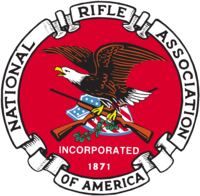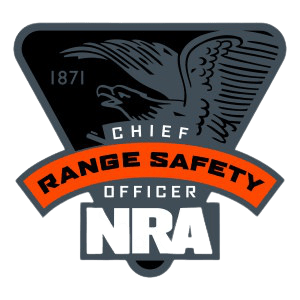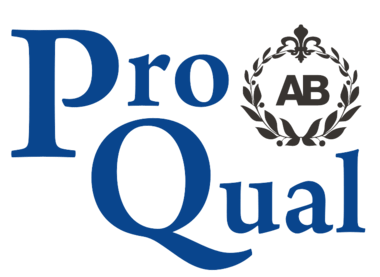14-Day Level 3 Certificate For Working As A Close Protection Operative Within The Private Security Industry (SIA Applicable)
Length
14 DAYS
Dates
Any time of the month
Cost
$5700
Locations
USA, UK, Thailand, Lebanon, Sri Lanka, Spain, Italy and Singapore
Introduction
This qualification is designed for those learners wishing to apply for a licence from the Security Industry Authority (SIA) to work as a close protection operative (CPO). It is based on the relevant SIA’s Specification for Learning and Qualification.
WHO IS THIS COURSE FOR?
At American Bodyguard, we understand that security and investigations are not just services; they are assurances of safety, trust, and peace of mind. With a steadfast commitment to excellence, unwavering integrity, and a track record of success, here’s why you should choose us for all your security and investigation needs:
Experience You Can Trust: With a decade of experience in the security and investigation industry, American Bodyguard has honed its expertise to provide unparalleled protection and investigative services. Our team consists of seasoned professionals with backgrounds in law enforcement, military, and private security, ensuring that you receive top-notch assistance tailored to your specific requirements.
Comprehensive Security Solutions: Whether you need personal security, event security, executive protection, or investigative services, American Bodyguard offers a comprehensive range of solutions to safeguard your interests. We meticulously assess risks, devise strategic plans, and implement robust security measures to mitigate threats effectively, giving you the confidence to navigate any situation with peace of mind.
Client-Centric Approach: At American Bodyguard, we prioritize our clients above all else. We understand that each client has unique needs and concerns, which is why we take a personalized approach to every assignment. From initial consultation to ongoing support, our team is dedicated to understanding your requirements and delivering customized solutions that exceed your expectations.
Cutting-Edge Technology: In an ever-evolving landscape of security threats, American Bodyguard stays ahead of the curve by leveraging cutting-edge technology and innovative tools. From state-of-the-art surveillance systems to advanced threat detection algorithms, we harness the power of technology to enhance our capabilities and provide you with superior protection and investigative services.
Global Reach, Local Expertise: Whether you require security services or investigations domestically or internationally, American Bodyguard has the global reach and local expertise to meet your needs effectively. With a network of trusted partners and affiliates worldwide, we can deploy resources swiftly and seamlessly, ensuring seamless coordination and support wherever you may be.
Commitment to Confidentiality and Discretion: We understand the importance of confidentiality and discretion in security and investigation matters. Rest assured that American Bodyguard operates with the utmost professionalism and discretion at all times, safeguarding your privacy and reputation with the highest level of integrity and confidentiality.
Proven Track Record of Success: Our track record speaks for itself. Over the years, American Bodyguard has successfully protected high-profile individuals, corporate entities, and sensitive assets, earning the trust and confidence of our clients through our unwavering dedication to excellence and proven results.
24/7 Support and Emergency Response: Security threats can arise at any time, which is why American Bodyguard provides round-the-clock support and emergency response capabilities. Whether you need immediate assistance or proactive security measures, our team is always available to address your concerns and ensure your safety and security, day or night.
In conclusion, when you choose American Bodyguard for your security and investigation needs, you’re not just hiring a service provider; you’re partnering with a trusted ally committed to your safety, security, and peace of mind. Experience the American Bodyguard difference today and discover why we are the preferred choice for discerning individuals and organizations worldwide
Clothing
- Grey, Blue Or Black Suit, Black Shoes, Dark Or Neutral Tie, Black Socks, Belt
- Laptop With Microsoft Word And Power Point,
- USB Memory Stick With 10 GB Max
- Pencil And Pen, Eraser
- Instructor
- Training equipment
- Exams
- Awards
- Classroom
- Range (Where Applicable)
- Ammo (Where Applicable)
- Accommodation (where applicable)
- Food and beverages
- Flights (where applicable)
- Airport Transfers (where applicable)
- Safety Glasses (Where Applicable)
- Ear Defenders (Where Applicable)
Awards
Duration
14 Days
Level
Skill Prerequisites
- *All Prerequisite Awards Should Not Be Expired So Please Check The Expiry Date Before Applying
- *All Candidates Should Have A Reasonable Level Of Personal Fitness
Topics
The qualification comprises Seven mandatory units:
1. Principles of Working as a Close Protection Operative in the Private Security Industry
- Understand the roles and responsibilities of a close protection operative
- Understand current law and legislation within a close protection context
- Understand the importance of threat and risk assessment
- Understand the importance of threat and risk management
- Understand personal and professional skills within a close protection environment
- Understand the importance of teamwork within a close protection environment.
- Understand surveillance, ant surveillance and counter surveillance methods
- Understand search procedures within a close protection operation for people, vehicles and buildings/ venues
- Understand close protection foot drills
- Understand venue security operations and requirements
- Understand the importance of planning, route selection and additional licence considerations
- Understand reconnaissance within a close protection environment
- Understand the importance of operational planning
2. Working as a Close Protection Operative in the Private Security Industry
- Be able to undertake a dynamic risk assessment
- Be able to demonstrate use of surveillance, anti-surveillance and counter surveillance
- Be able to search people, vehicles and venues
- Be able to demonstrate close protection foot drills
- Be able to demonstrate venue security skills
- Be able to manage transport arrangements within a close protection environment
- Be able to prepare and carry out a close protection assignment
- Be able to deal with a range of incidents within a close protection environment
3. Application of Conflict Management in the Private Security Industry
- Understand the principles of conflict management appropriate to the role
- Understand how to recognise, assess and reduce risk in conflict situations
- Understand the use of problem solving techniques when resolving conflict
- Be able to communicate to de-escalate conflict
4. Principles of Terror Threat Awareness in the Private Security Industry
- Understand terror threats and the role of the security operative in the event of a threat
5. Principles of Working as a Door Supervisor for Close Protection Operatives in the Private Security Industry
- Understand how to keep vulnerable people safe
- Understand licensing law relevant to the role of a door supervisor
- Understand queue management and venue capacity responsibilities relevant to a door supervisor
6. Application of Physical Intervention Skills for Close Protection Operatives Working in the Private Security Industry
- Understand the requirements of providing clear and concise instructions to the principal and team members in emergency situations
- Know how to respond to a change in operational conditions from Standard Operating Procedures (SOP) to Emergency Operating Procedures (EOP)
- Know the responsibilities of the close protection team when there is an immediate physical threat to the principal
- Understand the necessity for narrowing the concentric layers of protection when managing an immediate threat to the principal
- Understand the implications of common and criminal law when using force on another person
- Know the positive alternatives to using physical intervention skills in a close protection environment
- Understand associated threats as a result of an attempted assault or unwarranted attention towards a principal
- Know how to apply physical intervention skills in a justifiable, ethical, and professional manner
- Be able to use non-pain compliant soft skills to prevent harm to a principal
- Be able to use defensive non[1]pain compliant skills to protect self from assault
- Be able to use non-pain compliant methods of protecting the inner cordon
- Be able to protect the principal from assault
- Be able to communicate effectively to encourage de-escalation
7. Application of Physical Intervention Skills for Close Protection Operatives Working in the Private Security Industry
- Understand the requirements of providing clear and concise instructions to the principal and team members in emergency situations
- Know how to respond to a change in operational conditions from Standard Operating Procedures (SOP) to Emergency Operating Procedures (EOP)
- Know the responsibilities of the close protection team when there is an immediate physical threat to the principal
- Understand the necessity for narrowing the concentric layers of protection when managing an immediate threat to the principal
- Understand the implications of common and criminal law when using force on another person
- Know the positive alternatives to using physical intervention skills in a close protection environment
- Understand associated threats as a result of an attempted assault or unwarranted attention towards a principal
- Know how to apply physical intervention skills in a justifiable, ethical, and professional manner
- Be able to use non-pain compliant soft skills to prevent harm to a principal
- Be able to use defensive non[1]pain compliant skills to protect self from assault
- Be able to use non-pain compliant methods of protecting the inner cordon
- Be able to protect the principal from assault
- Be able to communicate effectively to encourage de-escalation













